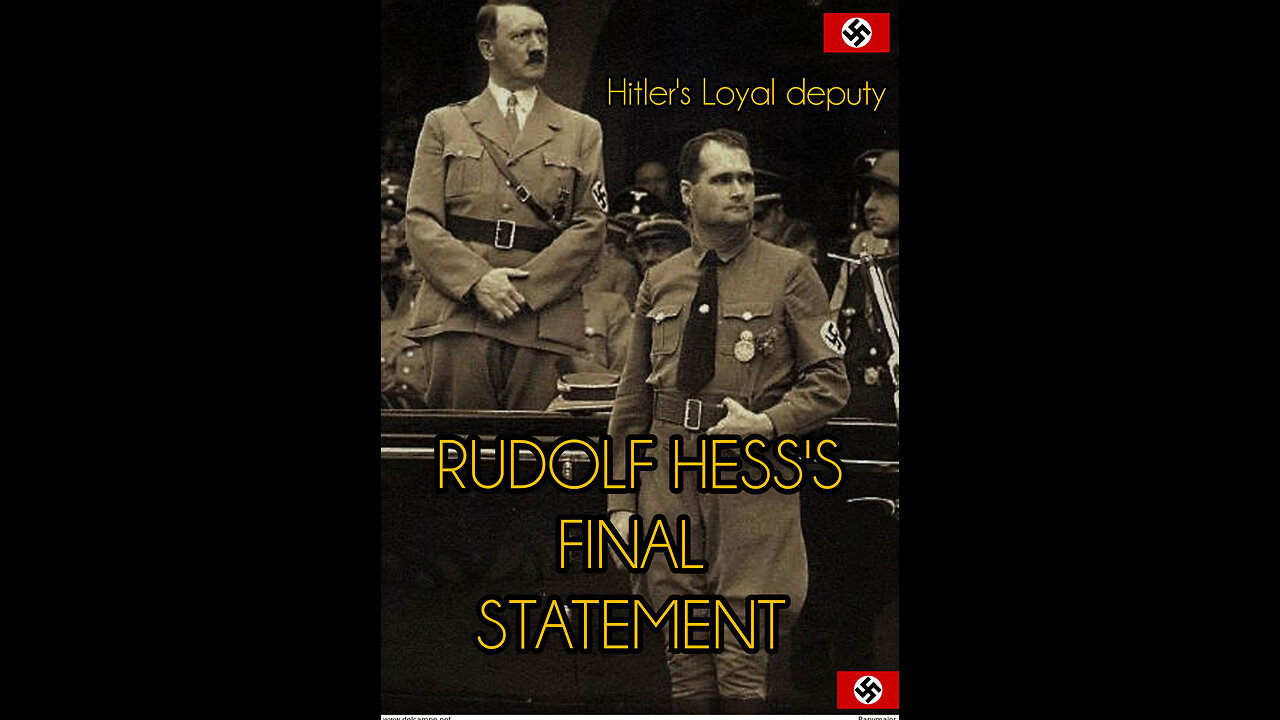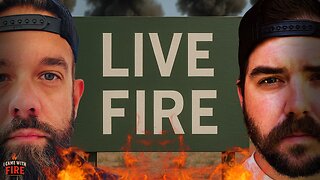Premium Only Content

Rudolf Hess's Final statement
Rudolf Hess was one of Adolf Hitler’s earliest and most loyal followers, rising to become Deputy Führer of Nazi Germany. He played a key role in the Nazi Party’s formation and helped edit Hitler’s Mein Kampf during their imprisonment after the failed Beer Hall Putsch in 1923. As Hitler's right-hand man, Hess was involved in internal party organization and policymaking, though he was gradually overshadowed by more aggressive Nazi leaders.
In May 1941, in one of the most bizarre incidents of WWII, Hess flew solo to Scotland in an unsanctioned attempt to negotiate peace with Britain. His mission failed, and he was taken prisoner by the British. Hitler, enraged and embarrassed, disowned Hess and declared him mentally ill.
After World War II, Hess was tried at the Nuremberg Trials and sentenced to life imprisonment for crimes against peace. He served his sentence in total isolation at Spandau Prison in Berlin, becoming its sole inmate from 1966 until his death. On August 17, 1987, Rudolf Hess was found dead by apparent suicide at the age of 93, though many believe the circumstances remain suspicious. His grave in Bavaria became a neo-Nazi pilgrimage site and was eventually demolished in 2011.
Hess’s life remains a symbol of fanaticism, failed diplomacy, and the deep psychological toll of ideological extremism.
-
 2:12:43
2:12:43
TimcastIRL
9 hours agoErika Kirk Addresses Public After Charlie Kirk Assassination, Live Coverage | Timcast IRL
400K381 -
 30:59
30:59
The Charlie Kirk Show
8 hours agoCharlie Kirk's beloved wife, Mrs. Erika Kirk addresses the Nation.
551K1.55K -
 1:53:28
1:53:28
Man in America
16 hours agoLIVE: Assassin Arrested? Civil War? Are We Being Played?? | LET'S TALK
102K110 -
 2:10:33
2:10:33
Badlands Media
14 hours agoOnlyLands Ep. 24: Processing Tragedy, Cancel Culture, and the Next Spark
66.7K27 -
 2:27:53
2:27:53
TheSaltyCracker
9 hours agoGot Him ReeEEStream 9-12-25
283K354 -
 52:11
52:11
Sarah Westall
11 hours agoBread and Circus Keeps you Financially Ignorant – Its Better for the Elites w/ Chris Russo
70.8K8 -
 3:49:08
3:49:08
I_Came_With_Fire_Podcast
17 hours agoFriday Night Live Fire
64.2K6 -
 1:20:39
1:20:39
Flyover Conservatives
19 hours agoFrom Demonic Deception to Divine Direction: Sid Roth’s Radical Encounter With God | FOC Show
67.5K1 -
 2:50:58
2:50:58
Chrissie Mayr
8 hours agoChrissie Mayr Reactions to Charlie Kirk, Liberal Celebrations, and More
59.9K34 -
 1:05:46
1:05:46
AlaskanBallistics
8 hours ago $4.00 earnedRemembering Charlie Kirk
55.1K10